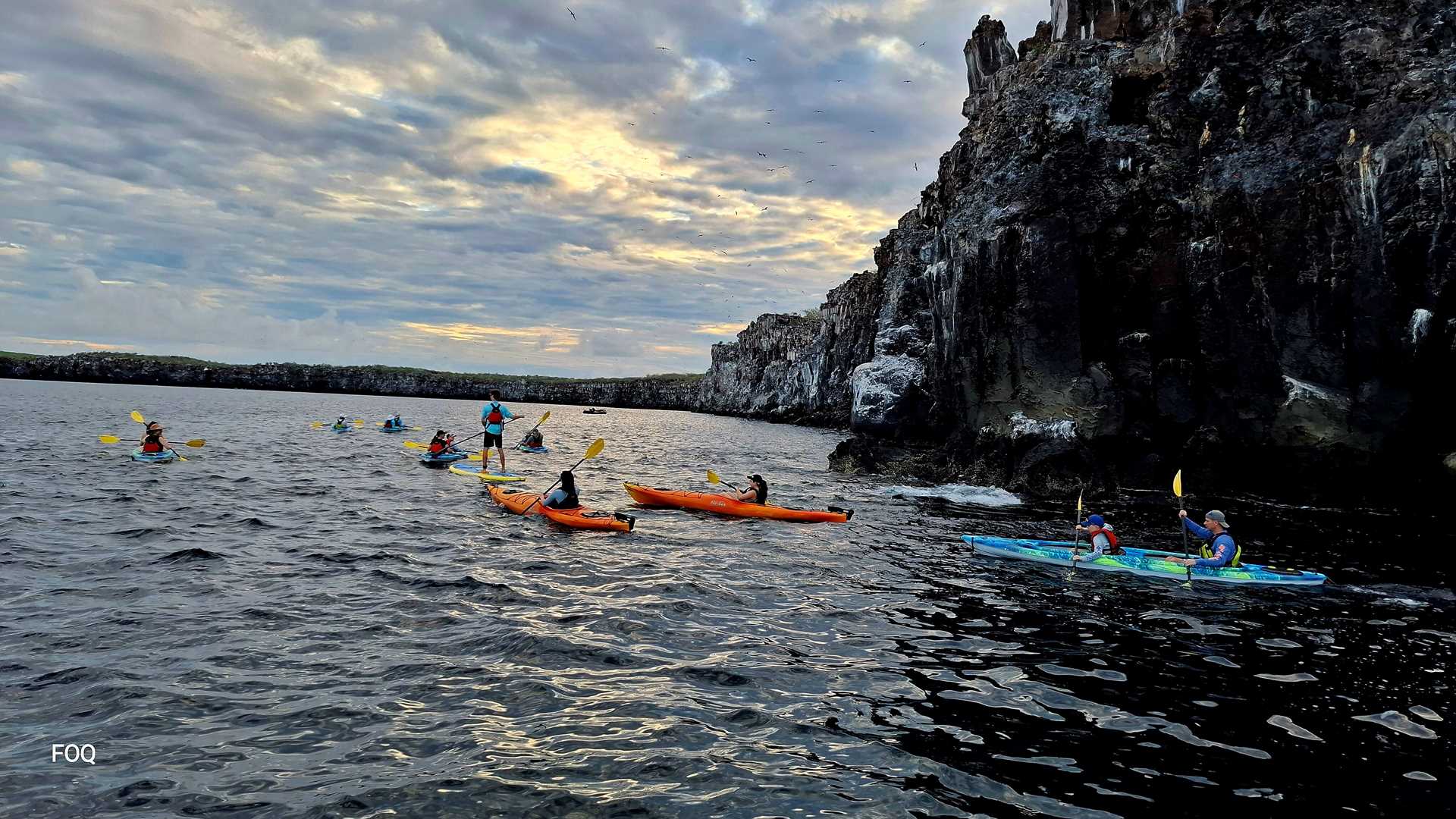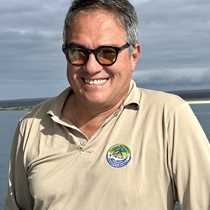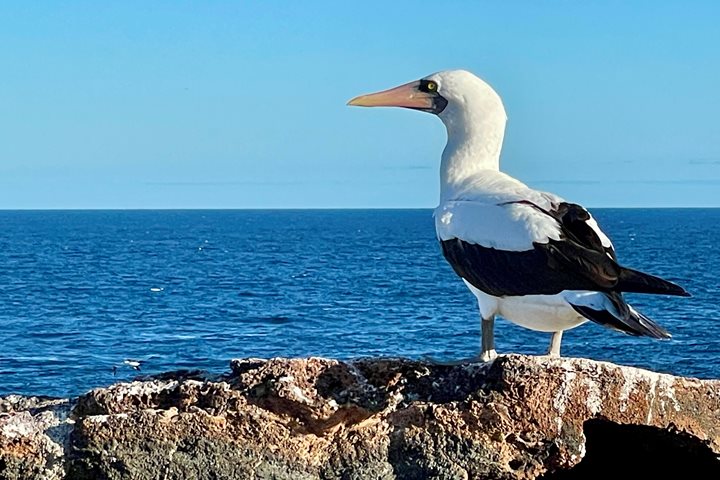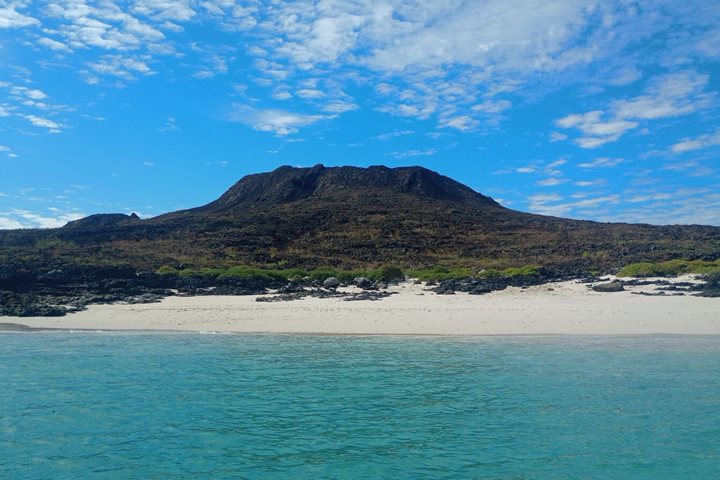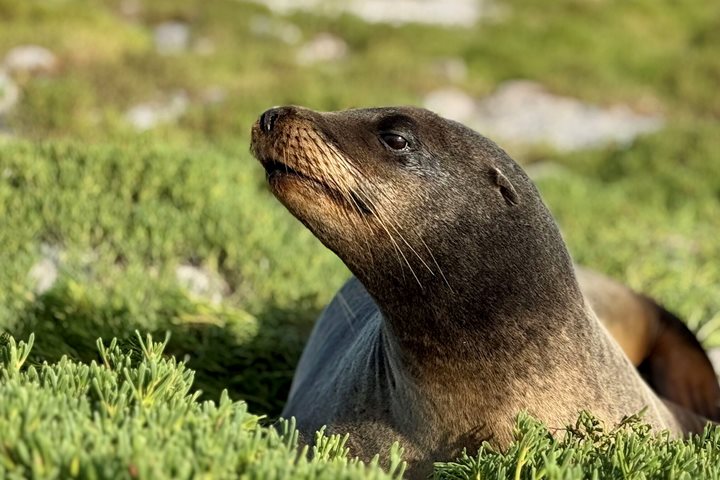Our visit to Genovesa, or Tower Island, started with a pre-breakfast kayaking excursion inside Darwin’s Bay. The water was calm as a mirror and the view was amazing. Our second activity after breakfast was visiting Darwin’s Bay beach; this site is exhilarating because of the enormous amount of birdlife surrounding you. In the afternoon after snorkeling, we visited Prince Philip’s Steps, where the largest concentration of red-footed boobies in the world showed itself in all its majesty. Great frigatebirds, Nazca boobies, Galapagos doves, wedge-rumped petrels, and short-eared owls were everywhere.
We closed the day with a lovely wine tasting on the 500-level at sunset. A memorable day indeed.

